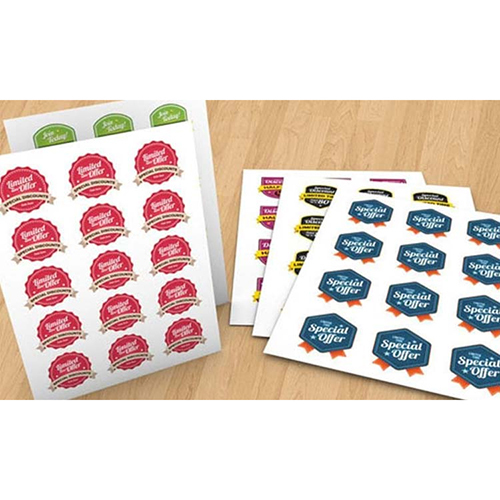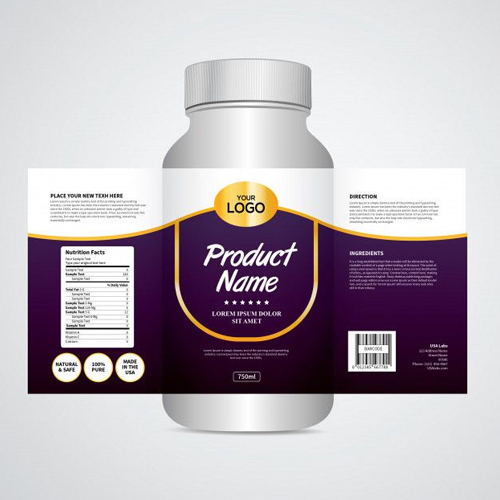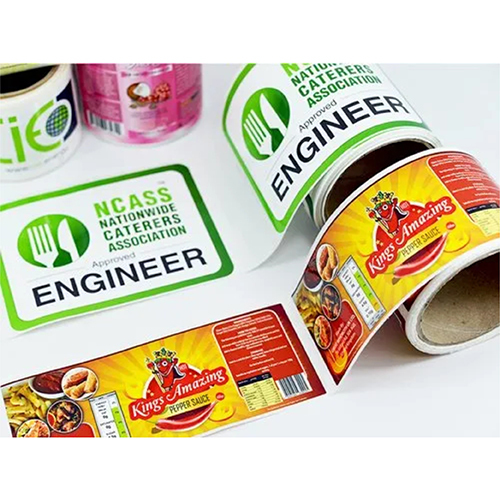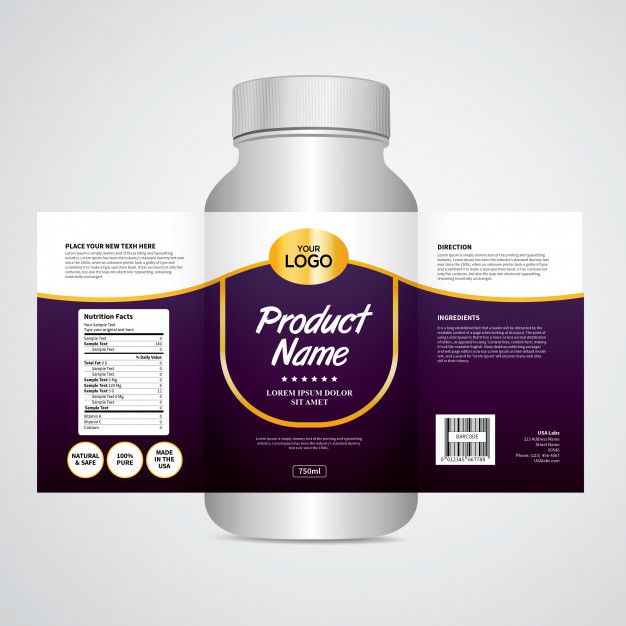Digital Printing Sticker
Digital Printing Sticker Specification
- Adhesive Type
- Solvent Adhesive
- Thickness
- 3 Millimeter (mm)
- Print Type
- Digital
- Material
- Other
- Printing Method
- Digital, Offset
- Design Printing
- Offer Printing
Digital Printing Sticker Trade Information
- Minimum Order Quantity
- 200 Pieces
- Payment Terms
- Cash Advance (CA)
- Supply Ability
- 1000 Pieces Per Week
- Delivery Time
- 7 Days
- Sample Available
- Yes
- Main Domestic Market
- All India
About Digital Printing Sticker
Digital printing of stickers refers to the process of producing adhesive labels or stickers directly from a digital file using inkjet or laser printing technology. Unlike traditional printing methods (like flexography or offset printing) that require physical printing plates, digital printing bypasses this step, making it ideal for a variety of sticker applications.
Here's a breakdown of what that means:
-
Sticker Definition: A sticker is a piece of paper, plastic, vinyl, or other material with an adhesive backing that allows it to be stuck to various surfaces. Stickers are incredibly versatile and are used for:
- Branding and Marketing: Company logos, promotional messages, product labels.
- Decoration: Personalizing items like laptops, water bottles, or even walls.
- Information: Providing details on products (ingredients, instructions), warning labels, barcodes, serial numbers.
- Personal Expression: Showcasing personality, interests, or affiliations.
- Events: Tickets, mementos, promotional giveaways.
-
Digital Printing Aspect:
- Direct from Digital File: Designs are created on a computer using graphic design software and then sent directly to a digital printer. This eliminates the need for expensive and time-consuming plate creation.
- Inkjet or Laser Technology: Digital printers for stickers typically use either inkjet (spraying tiny droplets of ink) or laser (using toner and static electricity) technology to apply the image onto the sticker material.
- No Plates: This is the key differentiator from traditional methods.
- Substrates: Digital printing can be used on a wide range of sticker materials, including vinyl, paper, polyester, clear films, metallic foils, and more.
Key Benefits of Digital Printing for Stickers:
- Cost-effectiveness for Short Runs: Without the need for plates, setup costs are significantly lower, making it economical for small to medium quantities.
- Fast Turnaround Times: Designs can be printed quickly, allowing for rapid production and meeting tight deadlines.
- Customization and Variable Data: Each sticker in a run can have unique information (e.g., barcodes, serial numbers, personalized names) because there are no fixed plates. This is known as variable data printing (VDP).
- High-Quality Output: Modern digital printers produce sharp, vibrant images with excellent color accuracy and resolution, often comparable to traditional methods.
- Design Flexibility: It's easy to make design changes or updates without incurring new plate costs.
- Less Waste: The ability to print on demand and without setup waste generally makes it a more environmentally friendly option.
- Proofing Accuracy: Color proofs are printed on the same machine as the final product, ensuring high accuracy.
In essence, digitally printed stickers offer a flexible, high-quality, and often more affordable solution for a wide range of sticker needs, especially for smaller quantities, personalized designs, and quick production.


Price:
- 50
- 100
- 200
- 250
- 500
- 1000+
More Products in Printed Lablet And Sticker Category
Paper Printing Sticker
Price 5.0 INR / Piece
Minimum Order Quantity : 100 Pieces
Material : Paper
Design Printing : Offer Printing
Thickness : 3 Millimeter (mm)
Shape : Any Customize Shape
Packaging Label
Price 5.0 INR / Piece
Minimum Order Quantity : 100 Pieces
Material : Other
Design Printing : Offer Printing
Thickness : 3 Millimeter (mm)
Shape : Rectangle
Roll Label Sticker
Price 25.0 INR / Piece
Minimum Order Quantity : 100 Pieces
Material : Paper
Design Printing : Offer Printing
Thickness : 3 Millimeter (mm)
Shape : Rectangle
Digital Printing - Label
Price 500.0 INR / Piece
Minimum Order Quantity : 200 Pieces
Material : Other
Design Printing : Offer Printing
Thickness : 3 Millimeter (mm)








 Send Inquiry
Send Inquiry Send SMS
Send SMS